History and Future of HTTP For Busy Developers
Dr Gleb Bahmutov PhD
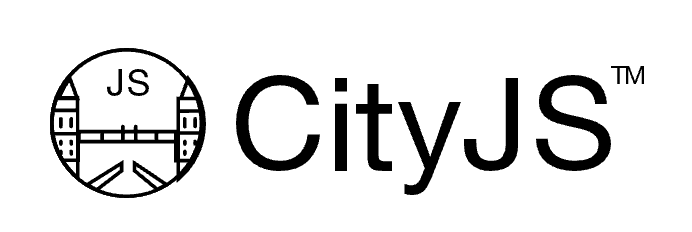

You cannot adapt to or survive this
survival is possible* but we need to act now
- change your life
- change your bank
- join an organization
- vote and protest
Speaker: Gleb Bahmutov PhD
C / C++ / C# / Java / CoffeeScript / JavaScript / Node / Angular / Vue / Cycle.js / functional programming / testing
Gleb Bahmutov
Sr Director of Engineering


Science: 📚
or
☠️

12 March
1989
vague but exciting
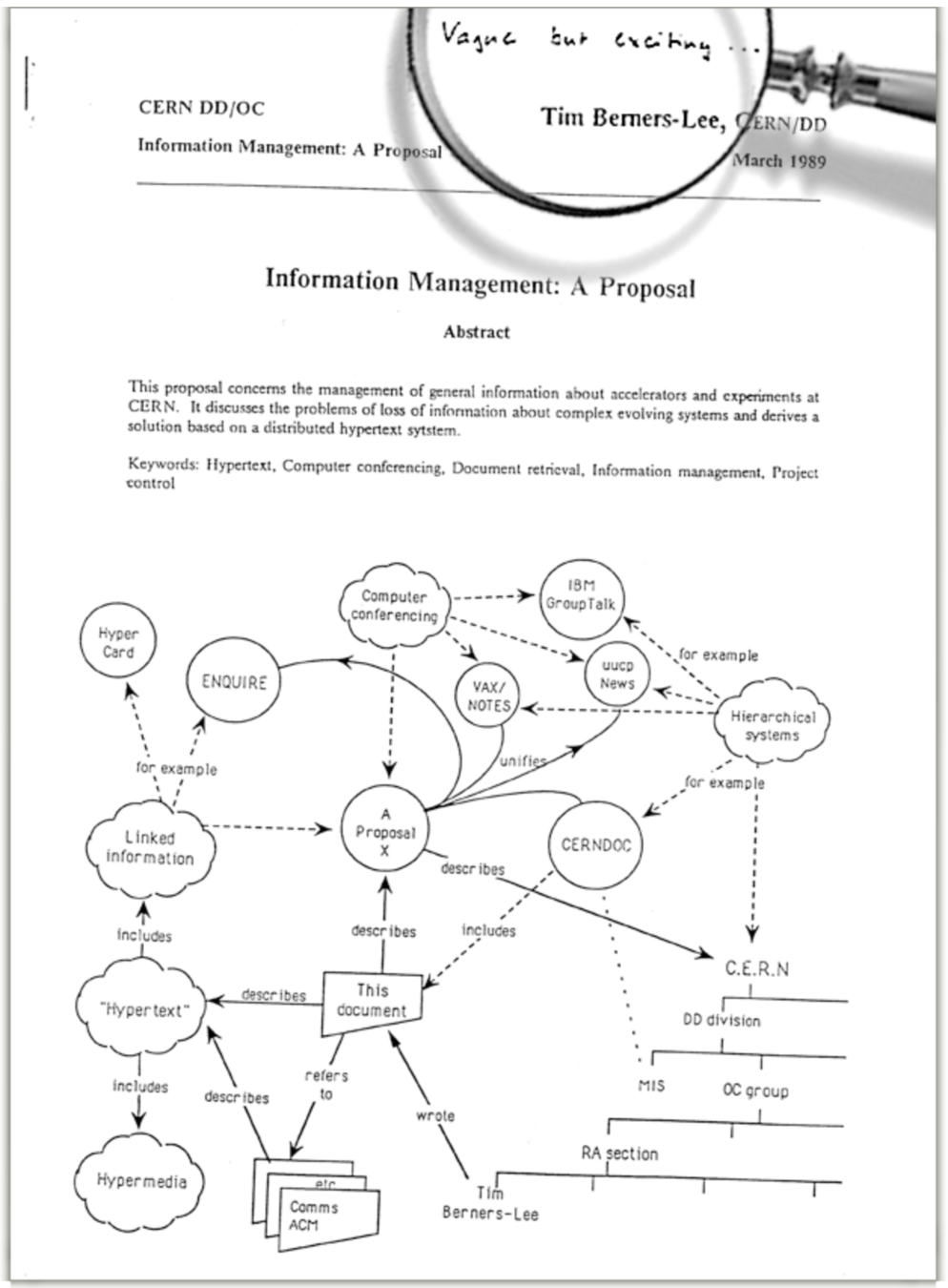
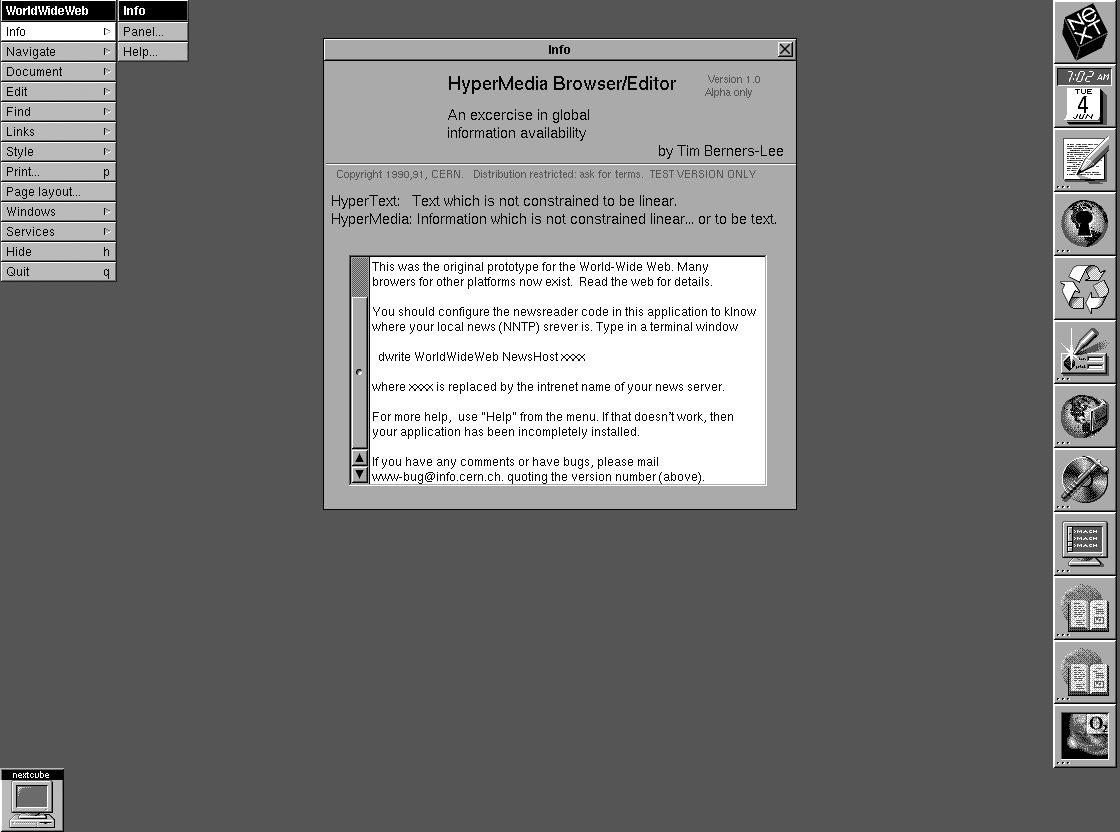
Edit and view HTML documents, 1991
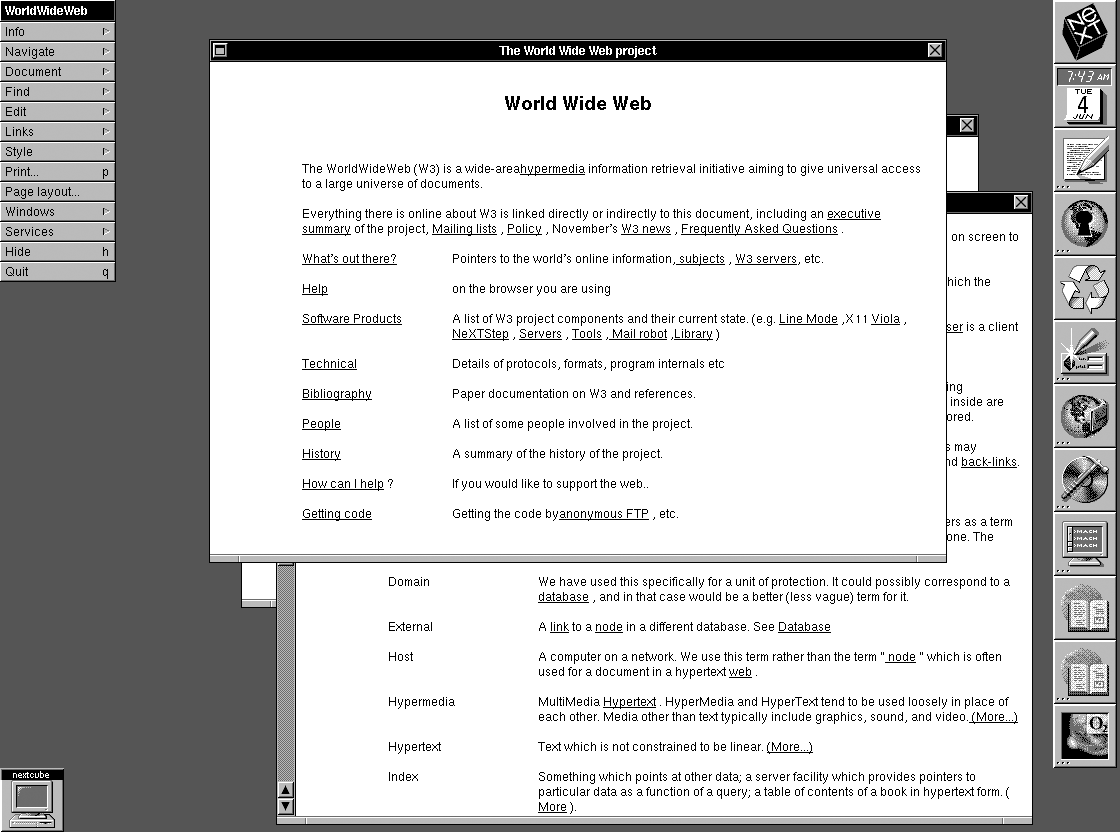
Nexus Browser, 1994
first website: info.cern.ch
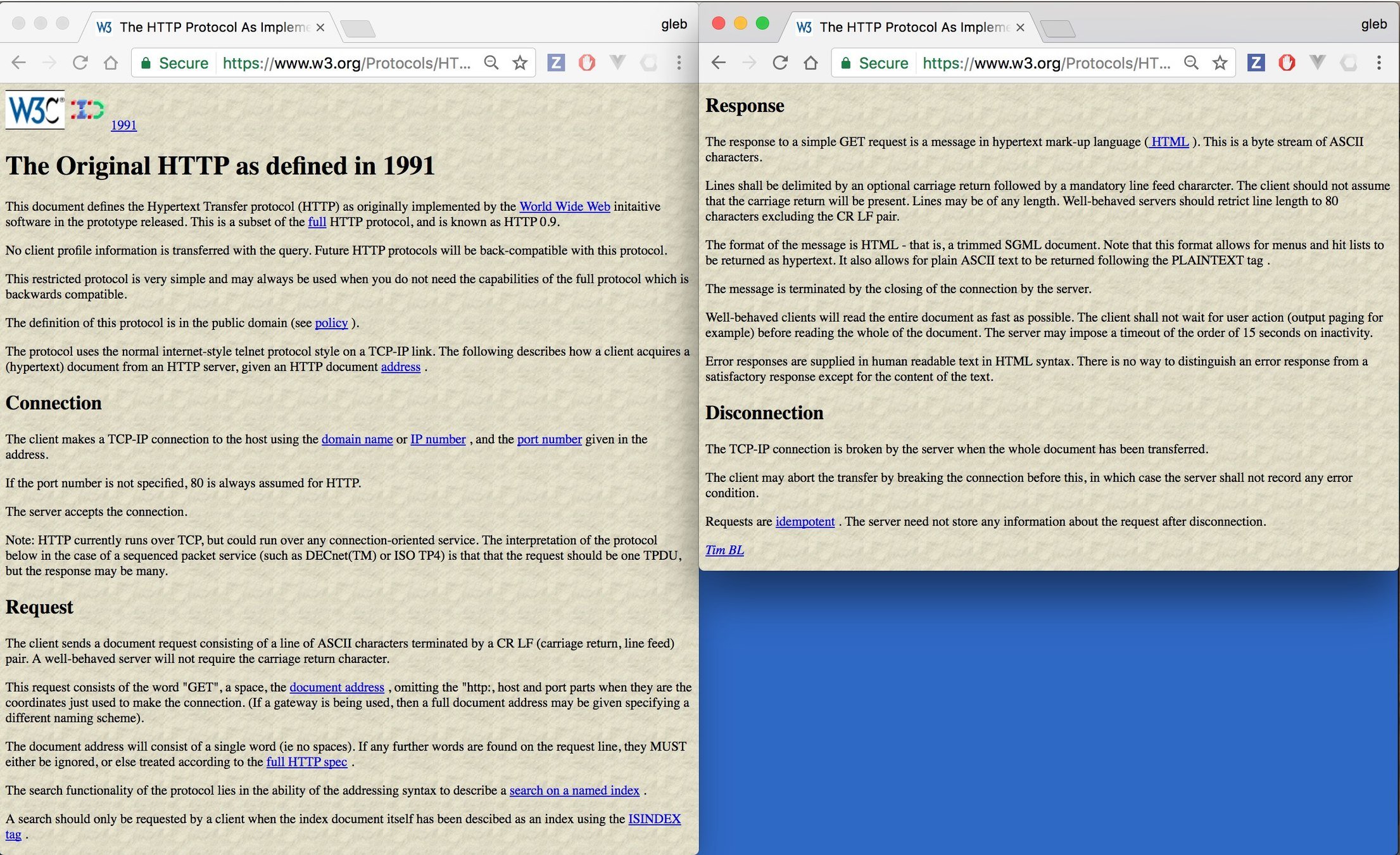
1991
HTTP/0.9
1991
650 words
3800 characters
HTTP/0.9

1991
HTTP/0.9

1991
HTTP/0.9

If the port number is not specified, 80 is always assumed for HTTP
because port 79 and 81 were taken (RFC 1060)
1991
HTTP/0.9

The TCP-IP connection is broken by the server when the whole document has been transfered

1991
GET /fuzzy_bunnies.txt
HTTP/0.9

1991
The response to a simple GET request is a message in hypertext mark-up language ( HTML ). This is a byte stream of ASCII characters.
HTTP/0.9

1991
No error response codes
HTTP/0.9

1991
Only GET
No cookies / sessions / server state
HTTP/0.9
Y - you
A - aren't
G - gonna
N - need
I - it
What Problem Does HTTP/0.9 Solve?
<html>
<p>More info
<a href="http://foo.com/bar.html">here</a>
</p>
</html>I want to read this HTML document
TCP
IP
TCP
IP
how?
where?
HTTP

1991
Future HTTP protocols will be back-compatible with this protocol.
HTTP/0.9
1991 was
a few years ago ...
World Wide Web went from zero to "everywhere" in about two years
Then:
| Date | # of web sites |
|---|---|
| '93 | 130 |
| '94 | 2700 |
| '95 | 23,500 |
| '96 | 100,000 |
<html>
<p>See diagram
<img src="http://foo.com/bar.jpg" />
</p>
</html>I want to see this JPEG image
Non-academic users:
HTTP/1.0
We Are Gonna Need It (WAGNI)
HTTP/1.0
1996
RFC 1945
60 pages
GET /mypage.html HTTP/1.0
User-Agent: NCSA_Mosaic/2.0 (Windows 3.1)
200 OK
Date: Tue, 15 Nov 1994 08:12:31 GMT
Server: CERN/3.0 libwww/2.17
Content-Type: text/html
<HTML>
A page with an image
<IMG src="/myimage.gif">
</HTML>HTTP/1.0
-
Non-HTML data (images!)
-
Methods (HEAD & POST)
-
Status Codes
-
User preferences (User-Agent)
-
Format negotiation (Content-Type)
1996
RFC 1945
HTTP/1.1
Formalize best practices
HTTP/1.1
1999
RFC 2616
27 drafts, latest 2014
The Hypertext Transfer Protocol (HTTP) is a stateless application-level protocol for distributed, collaborative, hypertext information systems.
HTTP/1.1
-
Performance (Caching, connections)
-
Security (HTTPS, 3rd party cookies)
-
Usability (IP scarcity, error codes)
1999
RFC 2616
GET /bar.html
<html>
title: bar
</html>*** **
bar.html
** ***
index.html
title: bar
*** **
bar.html
Give me the page ...
HTTP/1.1 is still /0.9
request
response
* I am really ignoring all server-to-server communication happening over HTTP
*
HTTP/1.1 is uniform and everywhere
Reality: multiple versions, implementations, extensions, working drafts
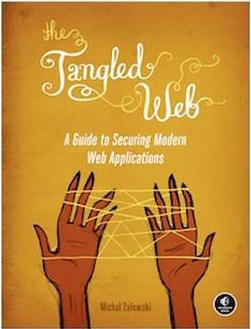
"The Tangled Web: A Guide to Securing Modern Web Applications"
by Michal Zalewski
ISBN-13: 978-1593273880
👍👍👍👍👍👍👍👍👍👍👍👍👍👍👍👍
When I open a browser ...
State (cookies)
Cache control
Security, security, security
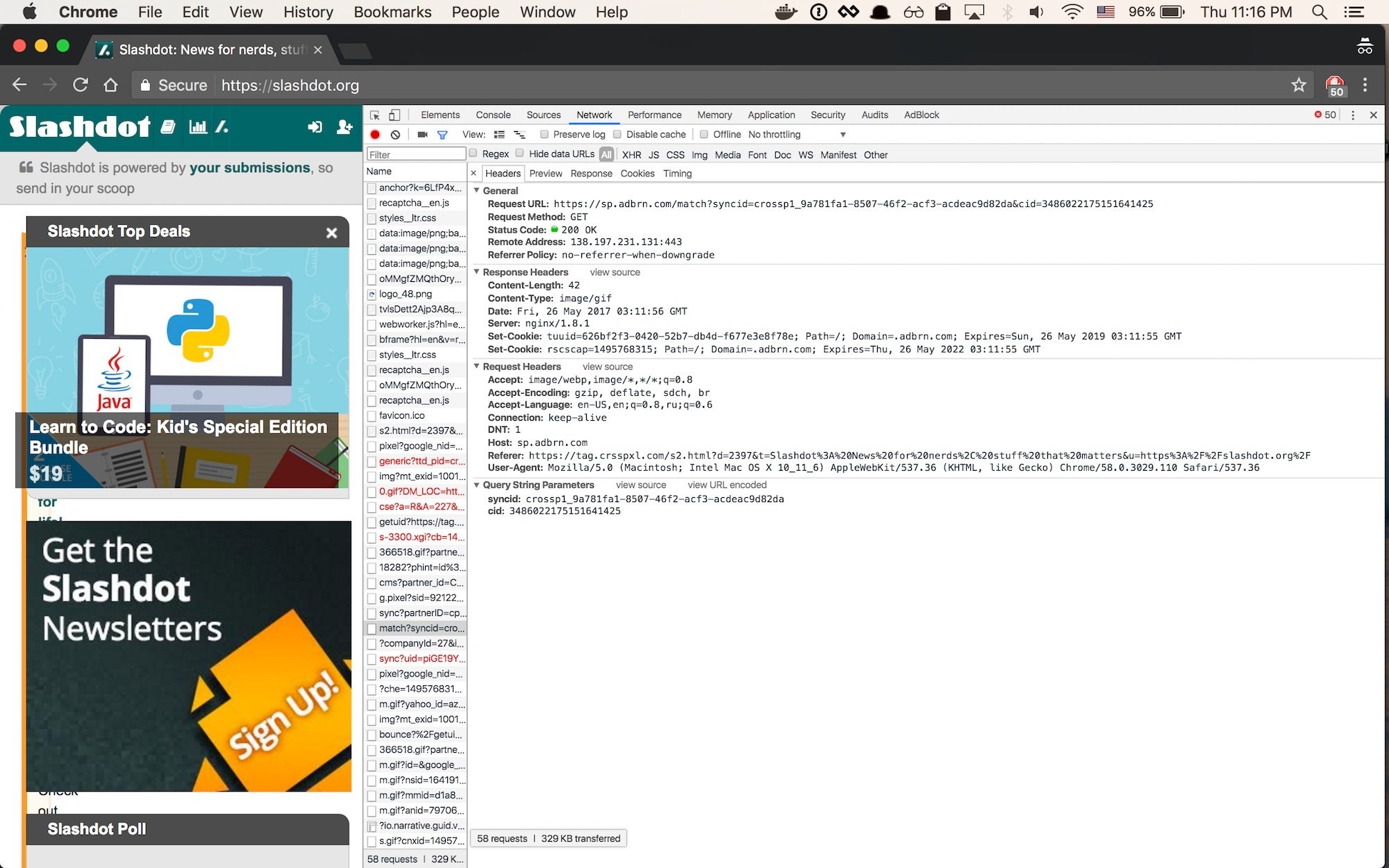
tracking pixels / cookies
58 requests to load
this page!
AJAX:
From websites
to web apps
i.e. "avoiding page reloads"
GET /index.html
*** **
** ***
<iframe src="bar.html">
index.html
GET /bar.html
1996: iframe in Internet Explorer
XMLHttpRequest
Gets the data from the server by a client side script
1999 Internet Explorer plugin
2004 Google Gmail, Kayak.com
2006 first spec draft
2014 latest spec draft
IP
TCP
HTTP
REST
GraphQL
2000
2012
Client - Server communications
<div> ... </div>
<script>
....
</script>
index.html
<div> ... </div>
<script>
....
</script>
index.html
HTTP/1 => HTTP/2 or QUIC
WebSockets
WebRTC
ServiceWorker
browser
browser
ServiceWorker
Blurring the line between client and server
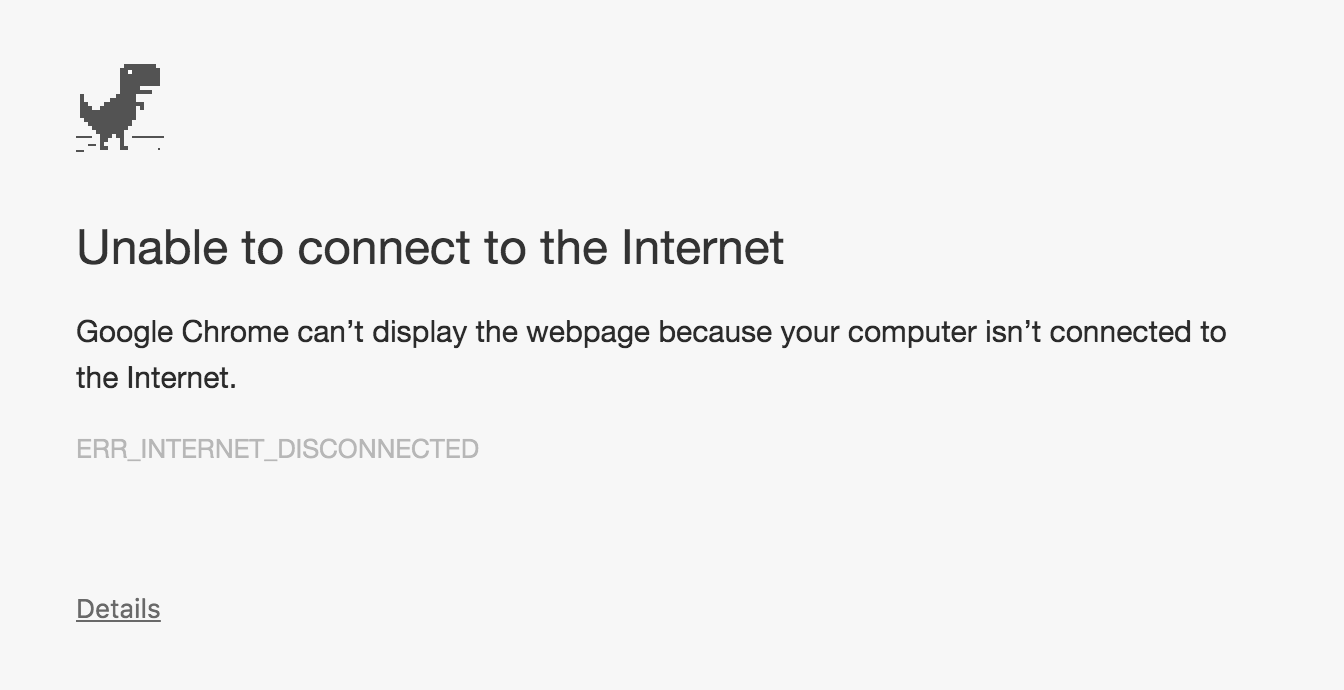
If a tree falls while you are in the forest ...
<html manifest="example.appcache">
...
</html>Application Cache
CACHE MANIFEST
# v1 2011-08-14
index.html
style.css
image1.png
# Use from network if available
NETWORK:
network.html
# Fallback content
FALLBACK:
/ fallback.htmldeclarative list
Application Cache
Turns out declaring caching strategy is hard.
ServiceWorker
Server
browser
Web Workers
ServiceWorker
Transforms
the response
Transforms
the request
Smart caching
OFFLINE SUPPORT
Image / video transcoding
Background data sync
What if an attacker can load malicious ServiceWorker script?
Malicious ServiceWorker injected via XSS can be really hard to get rid of
Please protect yourself from XSS
HTTP is dead
Long live HTTPS
The browser APIs worth discussing all require secure connections
http://localhost or https://...

Usually a single command!
Browser
Server
HTTPS
connections are expensive because
TCP + TLS handshakes!
data
Web Today
Ajax
ServiceWorker
HTTP/2
QUIC
HTTP/3
HTTP/2
Making web faster
*
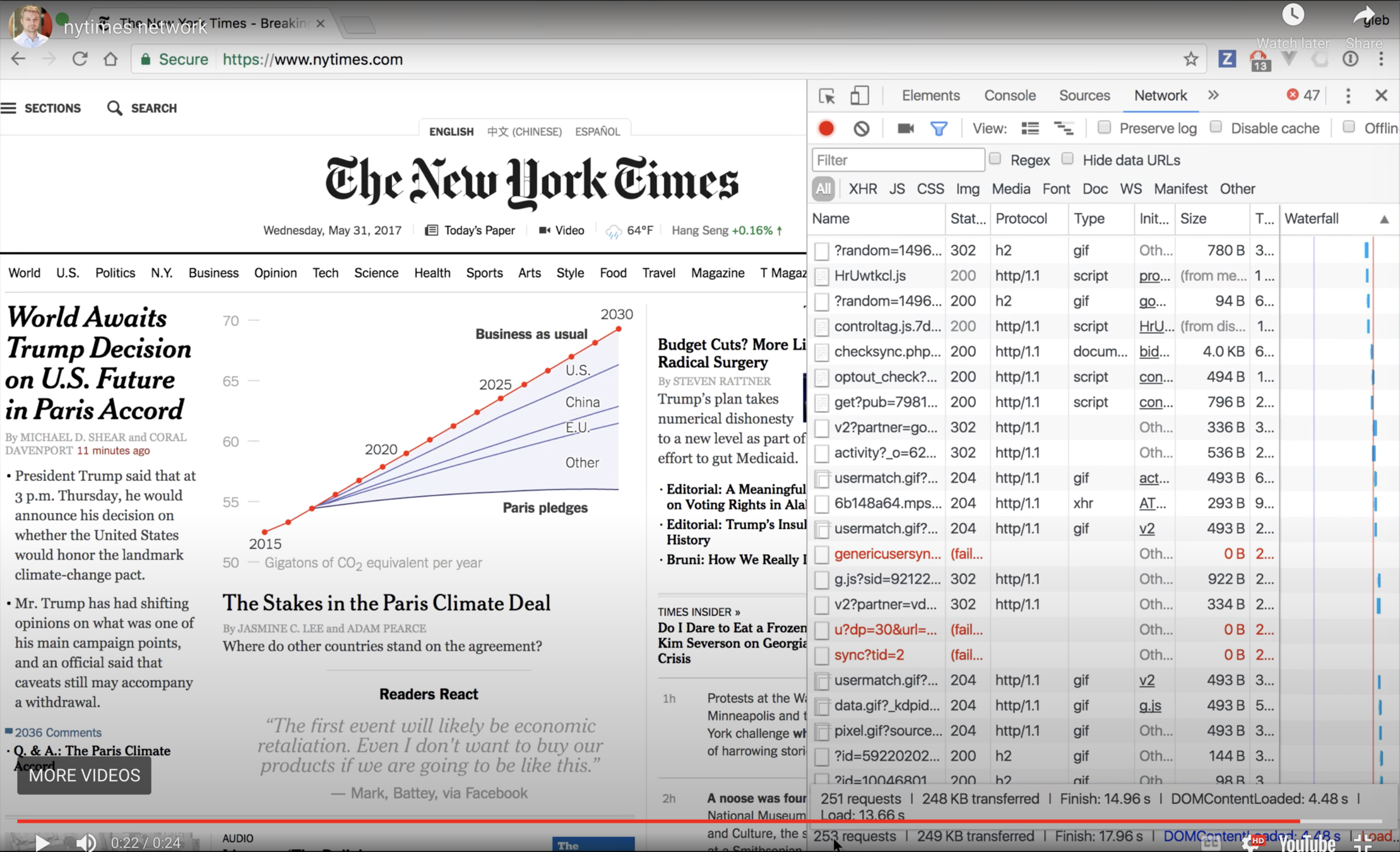
HTTP/1.1
- How to quickly load 200 resources?
- How to load some resources first?
- How to avoid duplicate data overhead?

Source: Ilya Grigorik https://bit.ly/http2-opt
2009 - Google starts SPDY
Need for Speed 🚤
2015 - RFC 7540
binary, multiplexed protocol - 55% speed up on top sites!
H2: Binary Framing Layer
H2: Multiplexing
H2: Stream Prioritization
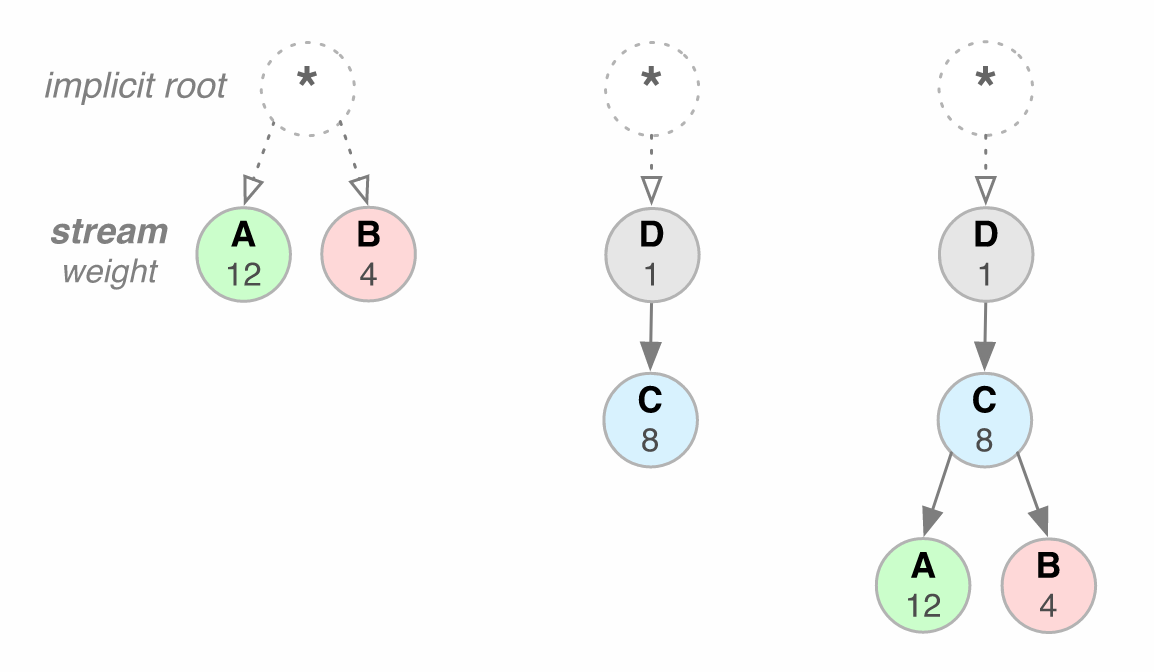
3:1
then
then
then
3:1
$ curl -I https://github.com
HTTP/1.1 200 OK
Server: GitHub.com
Date: Sat, 03 Jun 2017 03:08:50 GMT
Content-Type: text/html; charset=utf-8
Status: 200 OK
Cache-Control: no-cache
Vary: X-PJAX
X-UA-Compatible: IE=Edge,chrome=1
Set-Cookie: logged_in=no; domain=.github.com; path=/;
expires=Wed, 03 Jun 2037 03:08:50 -0000; secure; HttpOnly
Set-Cookie: _gh_sess=eyJzZXNzaW9uX2lkIjoiYzFlYTc0YTQ0OTNhZTdlNzI4MTgwNzI5N2QyNTlkNWMiLCJfY
3NyZl90b2tlbiI6IngzaHhRREMxNEpLUFNid1ZmMkc4d0N1OG1xdjZ3MkdmWmh4YkRFazNYQkU9In0%3D--b7171bd148da0b79b248fb561b8bfd4aadf16ff5; path=/; secure; HttpOnly
X-Request-Id: 75c9420698c53b1a707b10b2a7a510cc
X-Runtime: 0.056786
Content-Security-Policy: default-src 'none'; base-uri 'self'; block-all-mixed-content;
child-src render.githubusercontent.com; connect-src 'self' uploads.github.com
status.github.com collector.githubapp.com api.github.com www.google-analytics.com
github-cloud.s3.amazonaws.com github-production-repository-file-5c1aeb.s3.amazonaws.com
github-production-user-asset-6210df.s3.amazonaws.com wss://live.github.com; font-src
assets-cdn.github.com; form-action 'self' github.com gist.github.com; frame-ancestors
'none'; img-src 'self' data: assets-cdn.github.com identicons.github.com
collector.githubapp.com github-cloud.s3.amazonaws.com *.githubusercontent.com;
media-src 'none'; script-src assets-cdn.github.com; style-src 'unsafe-inline'
assets-cdn.github.com
Strict-Transport-Security: max-age=31536000; includeSubdomains; preload
Public-Key-Pins: max-age=5184000; pin-sha256="WoiWRyIOVNa9ihaBciRSC7XHjliYS9VwUGOIud4PB18="; pin-sha256="RRM1dGqnDFsCJXBTHky16vi1obOlCgFFn/yOhI/y+ho="; pin-sha256="k2v657xBsOVe1PQRwOsHsw3bsGT2VzIqz5K+59sNQws="; pin-sha256="K87oWBWM9UZfyddvDfoxL+8lpNyoUB2ptGtn0fv6G2Q="; pin-sha256="IQBnNBEiFuhj+8x6X8XLgh01V9Ic5/V3IRQLNFFc7v4="; pin-sha256="iie1VXtL7HzAMF+/PVPR9xzT80kQxdZeJ+zduCB3uj0="; pin-sha256="LvRiGEjRqfzurezaWuj8Wie2gyHMrW5Q06LspMnox7A="; includeSubDomains
X-Content-Type-Options: nosniff
X-Frame-Options: deny
X-XSS-Protection: 1; mode=block
X-Runtime-rack: 0.060928
Vary: Accept-Encoding
X-Served-By: e878d09eac725c89f5f15204c1326660
X-GitHub-Request-Id: F1E1:2F2B:6F2906B:A48C07A:593228422100 characters
~55% of HTTP/0.9 spec!
H2: Header Compression
pseudo headers
H2: Header Compression
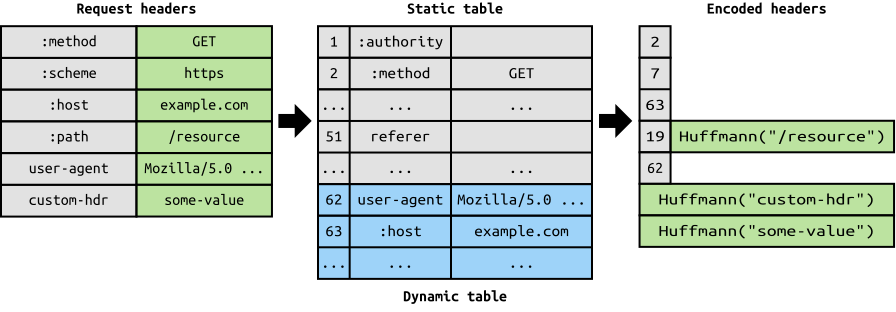
Common headers static table on client and server
HTTP/2 is changing the best performance practices

H2 changes some performance best practices
Source: Ilya Grigorik https://bit.ly/http2-opt
DO LESS WORK

H2 changes some performance best practices
Source: Ilya Grigorik https://bit.ly/http2-opt
MEASURE FIRST!
Web Today
Ajax
ServiceWorker
HTTP/2
QUIC
HTTP/3
HTTP/2 Achilles' heel
H2: If a packet is lost
TCP: all have to wait!
IP
TCP
HTTP/1.1
WebSockets
HTTP/2
TLS
Order of packets guarantee
TCP
HTTP/1.1
WebSockets
HTTP/2
TLS
UDP
IP
QUIC
QUIC
like SPDY but over UDP
'99
2009
2015
HTTP/1.1
SPDY
HTTP/2
QUIC
HTTP/0.9
'91
HTTP/1 - SPDY - HTTP/2 - QUIC timeline
2013
(deprecated)
Nov 2018
HTTP over QUIC becomes HTTP/3
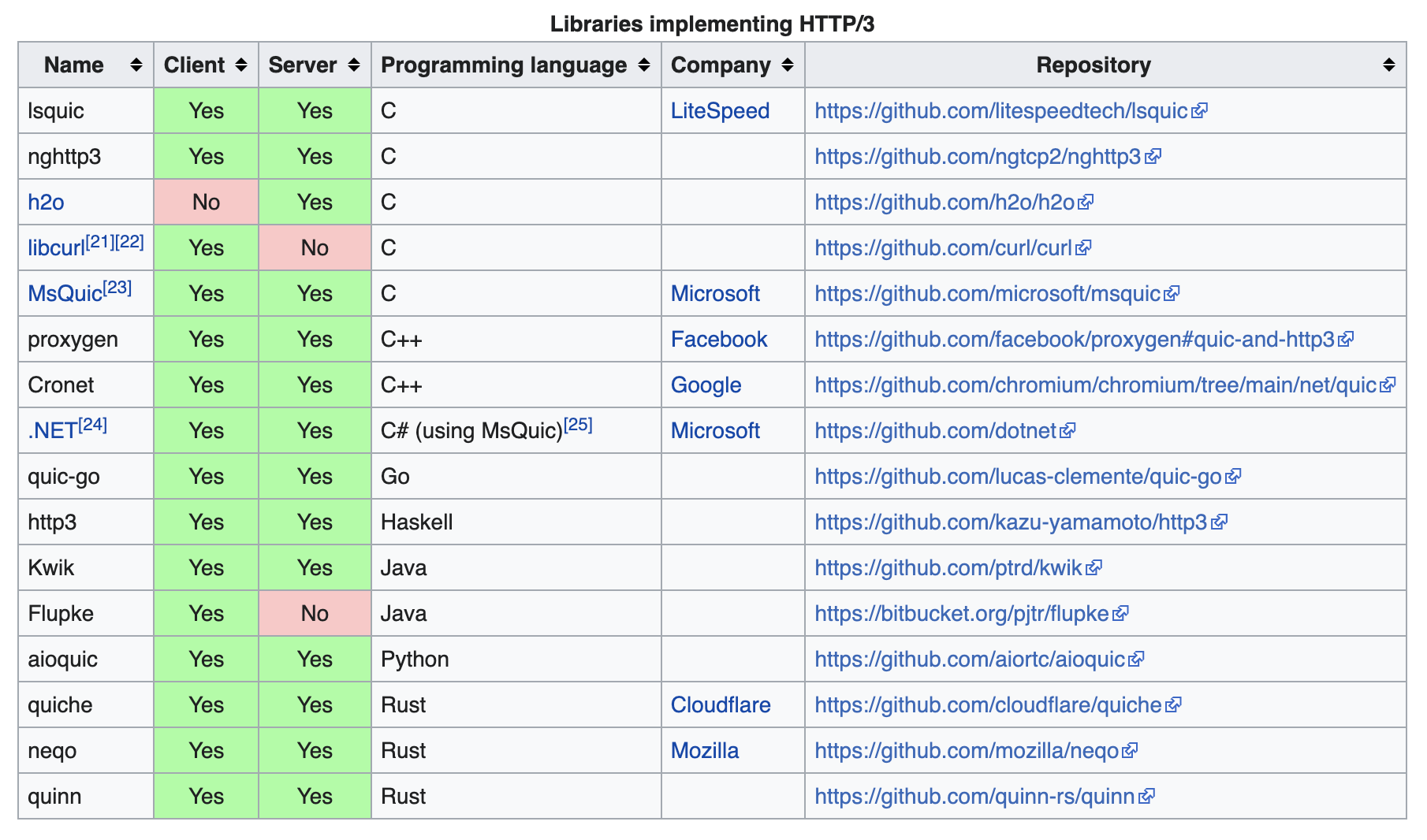
HTTP: Conclusions
Every version of HTTP
and related protocols was a solution to a real-world problem
HTTP: Conclusions
Most of the time the problem was not apparent until real world adoption
HTTP/0.9 - loading remote HTML documents
HTTP/1.x - popularity and growth of World Wide Web
Ajax - loading data without full page reload
WebSockets - realtime communication with the server
ServiceWorker - scriptable caching
HTTP/2 - performance for loading modern websites
QUIC & HTTP/3 - an alternative take on performance for loading modern websites
Only failed products stay unchanged
Tomorrow a new protocol will appear to solve problems that HTTP/2 and HTTP/3 will exhibit
History and Future of HTTP For Busy Developers
Gleb Bahmutov @bahmutov
